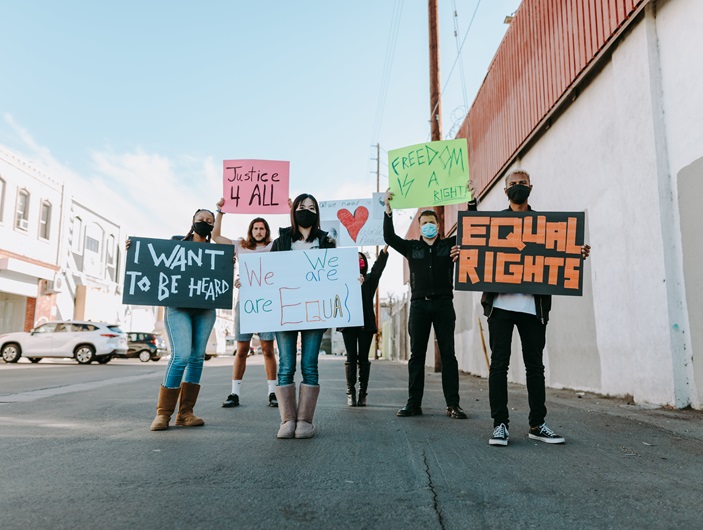Understanding student diversity
Diversity ...
... refers to differences between people. The main dimensions of diversity are
- gender,
- class,
- race,
- age,
- dis_ability,
- nationality,
- religion,
- language,
- sexual orientation,
- belief and
- care responsibilities.
Diversity is first and foremost a description of human heterogeneity and of the variety of your students' lifestyles and realities. Some have care responsibilities, they are of different ages, some have (invisible) disabilities or impairments, their social backgrounds and class positions vary, and so on. They will differ from you in one or the other dimension of diversity and thus also view studying, teaching and learning, university education and qualification from different positions than you as an instructor.


Diversity ...
... implicitly means more and can be linked to the following power relations:
- sexism
- heteronormativity
- racism
- classism
- ableism
- ageism and many more.
In this understanding, diversity refers to social inequalities and structural discrimination that exist in our society. These power relations structure the higher education sector in the same way as other areas and mean that students experience and perceive the university in very different ways: Some feel welcomed and valued as whole persons, understand academic language and quickly see through the bureaucratic processes. Others, on the other hand, have no role models who are similar to them, cannot share everything about their everyday life and have to overcome all kinds of hurdles and challenges. Most experience privileges in some and disadvantages in other situations.
Key terms and relations
In this video, Ritu Bhasin explains what diversity means and how it differs from the concepts of inclusion and equity.
In this video, Anthony Abraham Jack reveals how and why disadvantaged students struggle and explains what higher education institutions can do differently if these students are to thrive.
Power relations in everyday university life
In these videos, the individual, sometimes interrelated power relations are explained theoretically and with the help of examples.
In this video, Celia Edell explains sexism in Higher Education.
In this video, the abbreviation LGBTQQIAAP2S (Lesbian, Gay, Bisexual, Transgender, Queer, Questioning, Intersex, Asexual, Ally, Pansexual, and Two Spirit) is explained.
Nicole Sweeney explains racism, discriminination, stereotypes, prejudice and biases with the help of many study examples.
What exactly is mental health? What are protective and risk factors affecting mental health?
In this video, based on his research Wolfgang Lehmann explains the impact of social class on educational paths.